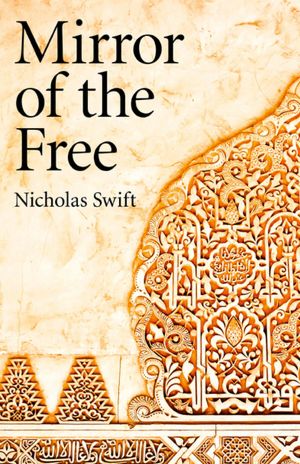
I’m going to begin this review by quoting the back cover of the book:
“The images on the Marseille Tarot cards started out as illustrations of Sumero-Bablyonian (sic) myths, preserved through the centuries on cylinder seals. They were copied by people who didn’t understand them but who also had access to some form, whether written or oral, of the wisdom encoded in those myths and in Bible stores. That wisdom is identical with Sufi teachings as espoused by teachers like Ibn al ‘Arabi, Rumi, and others including Gurdjieff and his teachings about the Enneagram. The myths and stories are decoded in this book using the multiple meanings conveyed by Arabic consonantal wood roots and by reference to those doctrines and to modern discoveries about conditioning and the hemispheric specialization of the brain. Arabic is the closest existing descendant of the ancient Protosemitic language. The Kabbalah, long rumoured to be linked to the Tarot , is shown to come from the same sources, and originally had eight, not ten, sefiroth. The visual evidence alone is overwhelming: the mystery of where the Tarot comes from has been definitely solved. Nicholas Swift was born in St. Catharines Canada, and is a graduate of the University of Toronto.”A regular sledgehammer to the brain, huh? Brace yourself, because it’s a representative sample of what the reader will find within the covers. Swift follows up on Helena Blavatsky’s premise that “the real Tarot, in its complete symbology, can be found only in the Babylonian cylinders…” (HP Blavatsky, “Collected Writings: Miscellaneous” (Vol. XIV), p 106) There’s no evidence given for how cylinder seal imagery and Sufi wisdom were incorporated into the tarot trump. Deviations from cylinder seal images are “ mistakes” on the part of the TdM artist. Blavatsky’s and Swift’s premise has to be accepted at face value.
The author identifies the deities and scenes on the cylinder seal images insomuch as that is possible. Connections to the trump images are offered, along with relevant concepts from Sufi writers and that ubiquitous philosophical reprobate, Gurdjieff. The author explores Arabic homonyms, alike-sounding words that are spelled differently and mean different things (i.e., there, their, and they’re). Homonyms are a common device in ancient philosophical writing used to emphasize multiple levels of meaning.
As a summary of content, this appears to be an awesome collection of mind-tickling information. But the reader should be prepared to contend with Swift’s writing style. American readers in particular will have to pick part some of the extremely lengthy sentences and be patient with the round-about passages that eventually (sometimes, maybe) get to the damn point. Swift is a new entry into the school of tarot writing where an aggressive onslaught of bedazzling facts and ideas substitutes for coherent conclusions, or making the information useful beyond the mere possession of said facts.
The work presents other challenges. There are no chapters or section headers to give the reader a moment to pause and absorb before moving to the next set of ideas. It’s a rambling dissertation with little internal organization. Cards, cylinder seals, and ideas don’t appear in any deliberate order. This chaotic format could be intentional on the author’s part, as it’s reminiscent of late 19th century occult writing, particularly of Madame Blavatsky. The images of the cylinder seals are grainy and sometimes indecipherable, too.
To add to the collection of disconcerting deviations from contemporary literary conventions, there’s no ending to the book – no concluding summary or final statement. The discussion simply ends, as though the writer dropped off a cliff with a thud. The next page turns to the References cited in the book, and a list of Sources. This is all the more remarkable as Swift’s bio indicates the author worked as an editor.
This might be a brilliant book, but the lack of basic presentation devices and organization turns it into a mountain-climbing expedition. Only the reader can decide if the climb is worth the while, because the making the material coherent and useful is foisted onto the reader. The pity of it is, some less-able writer will come along in a few years, do a better job of organizing and presenting the material, and sell a lot more copies of his book than Swift will of this volume.
On the positive side, the long-neglected writings of the Persian and Arabic wisdom schools and mystical movements (the Sufis) of the 8th – 12th centuries CE are finally leaking into the sphere of western esotericism and astrology. It was inevitable that someone would kick open the door between the Wisdom schools and the tarot.
A number of other reviews can be seen at: http://www.dodona-books.com/books/mirror-of-the-free. The reviews, like the book, are garbled and uneven. Some reviewers were wowed by the contents. A few coughed up a remark or two about the difficult presentation and grainy images. While all the reviewers agreed the book offered a fascinating collection of information, not one suggested that it offered useful tools for tarot readings. A telling omission, that.
Plenty of tarot books go overboard in spoon-feeding the reader a puree of regurgitated, watered-down information. This presentation is the diametric opposite of the spoon-feeding variety. If readers are willing to tackle the challenges, there are gold nuggets to be mined.
With that in mind – read the book. But curb your expectations for immediately accessible tools to use in tarot readings. It isn’t that sort of book.
~reviewed by Elizabeth Hazel
Author: Nicholas Swift
O Books (Dodona Books, John Hunt Publishing) 2011
pp.184 pages, $19.95
